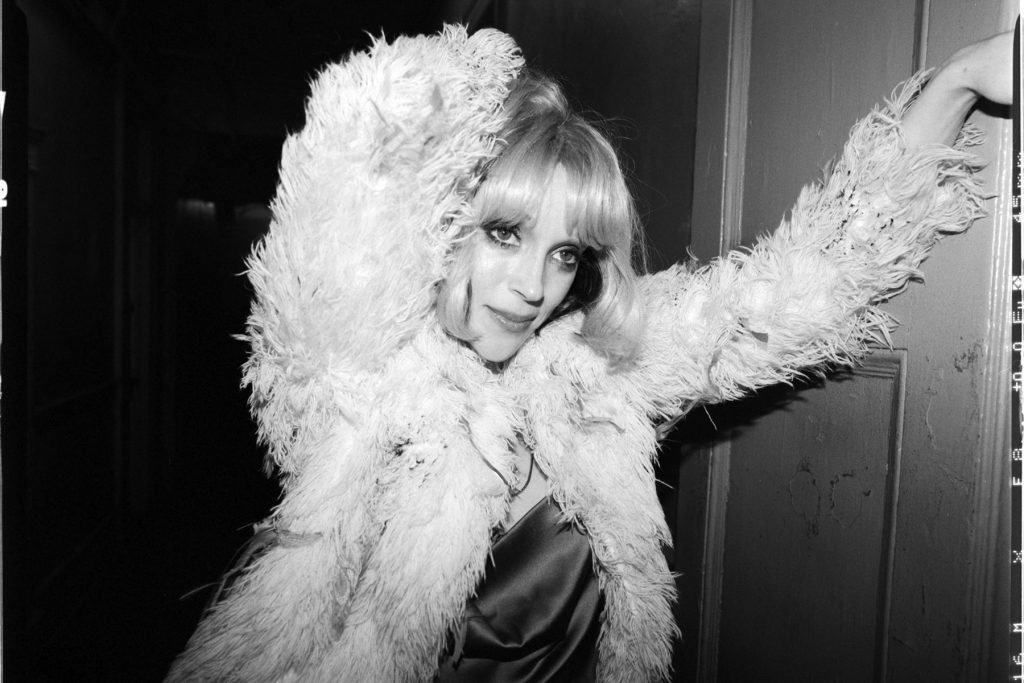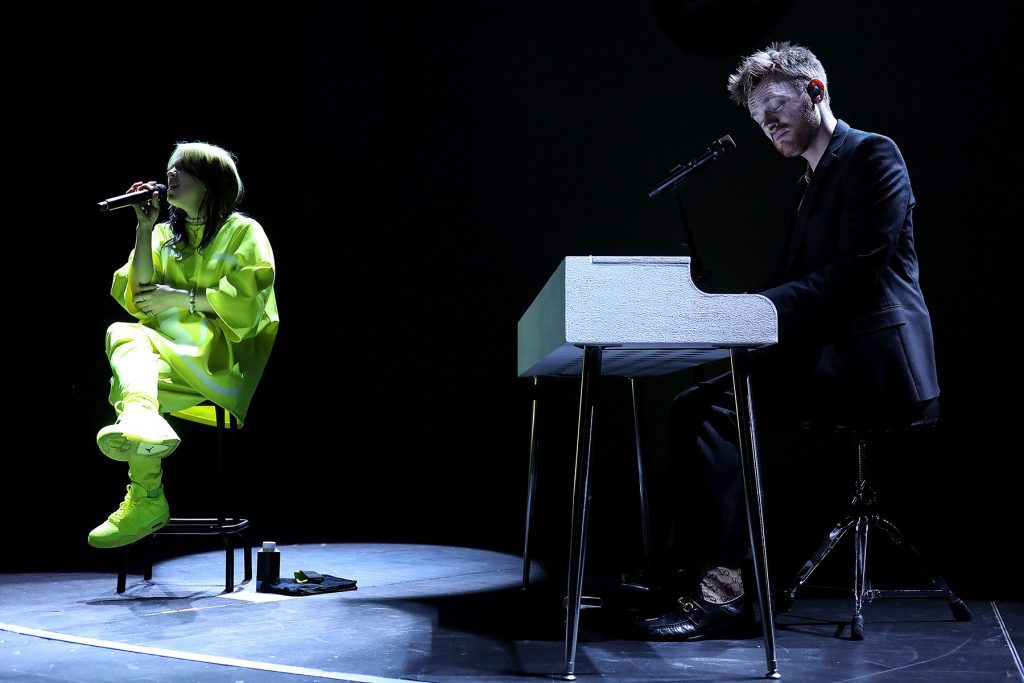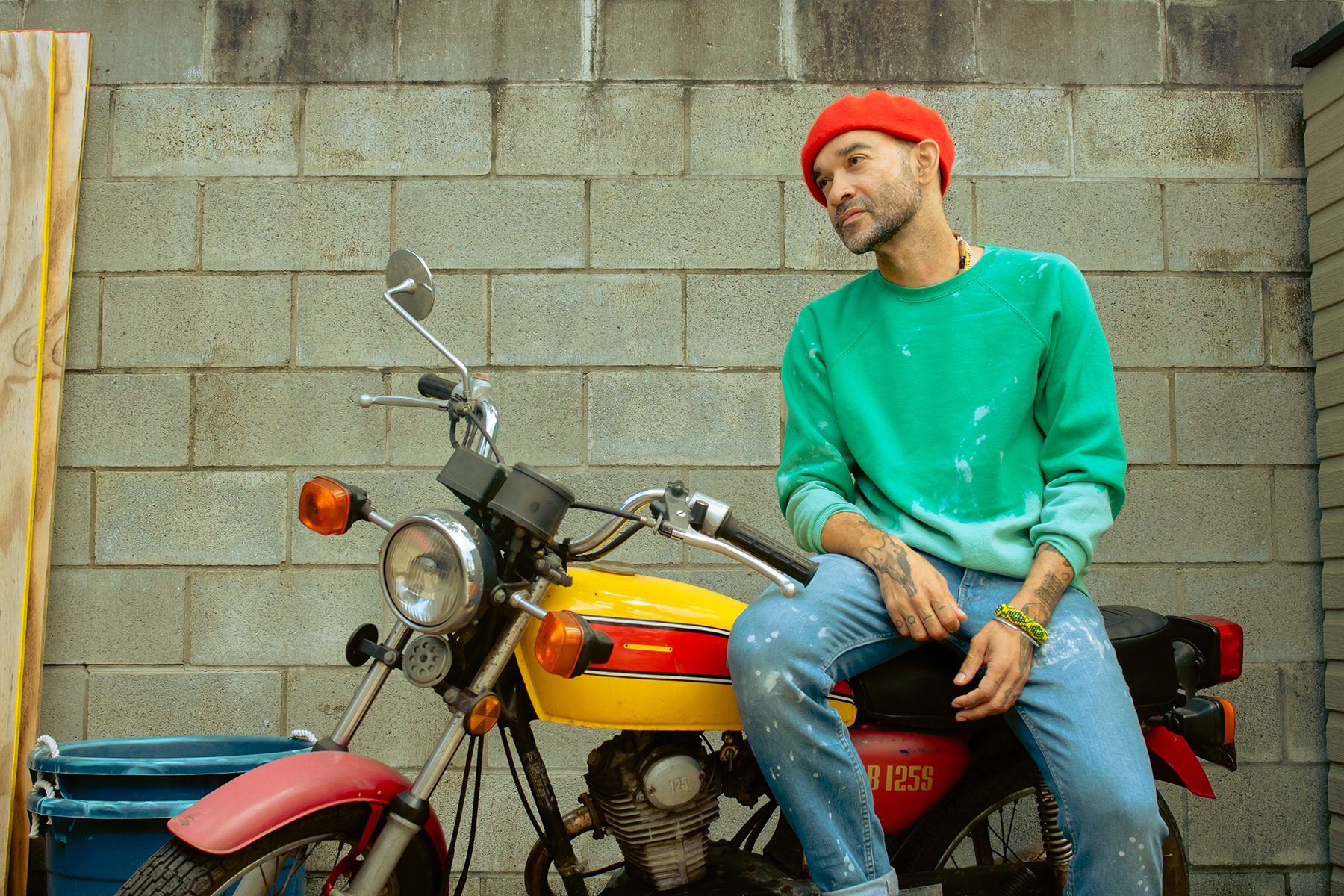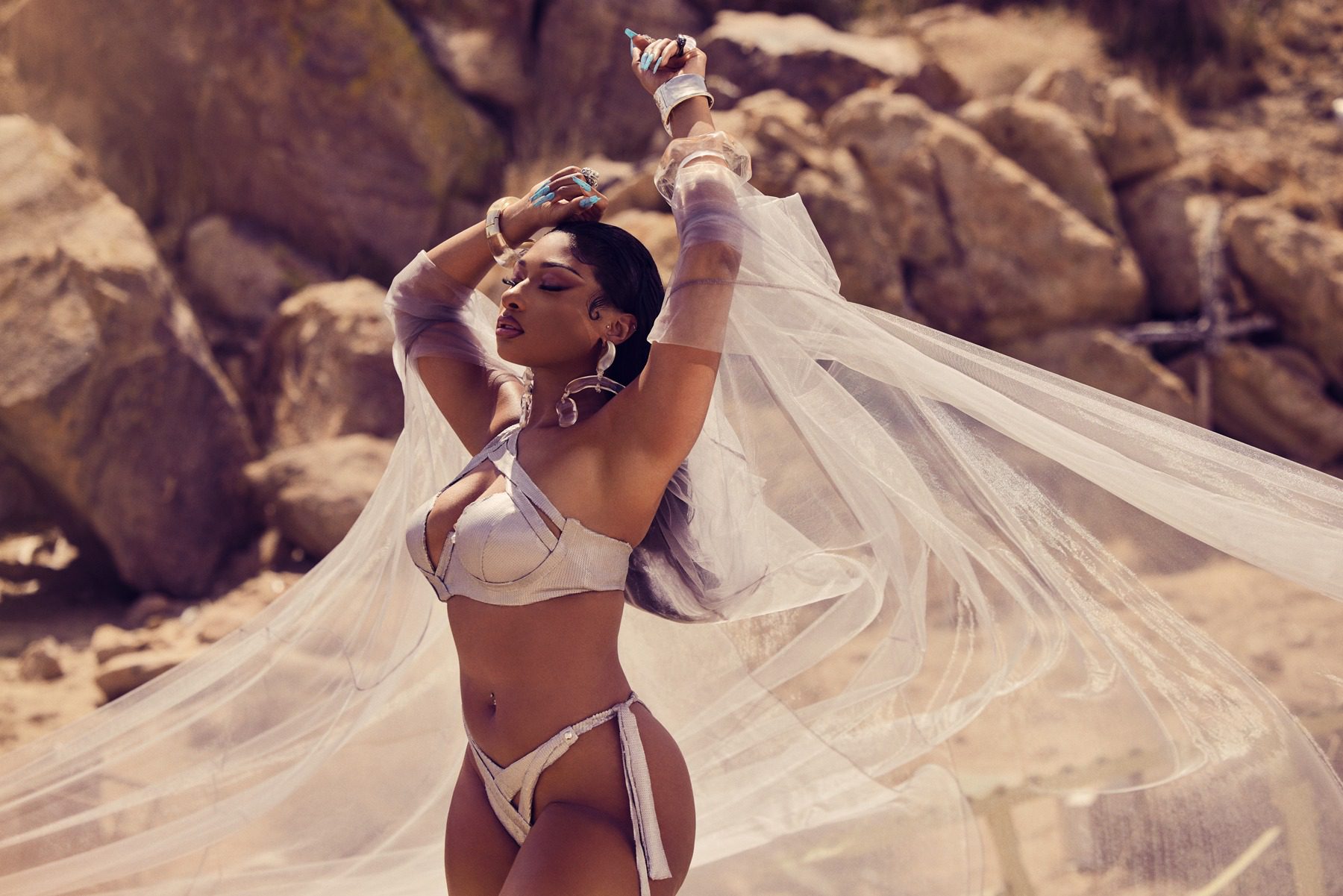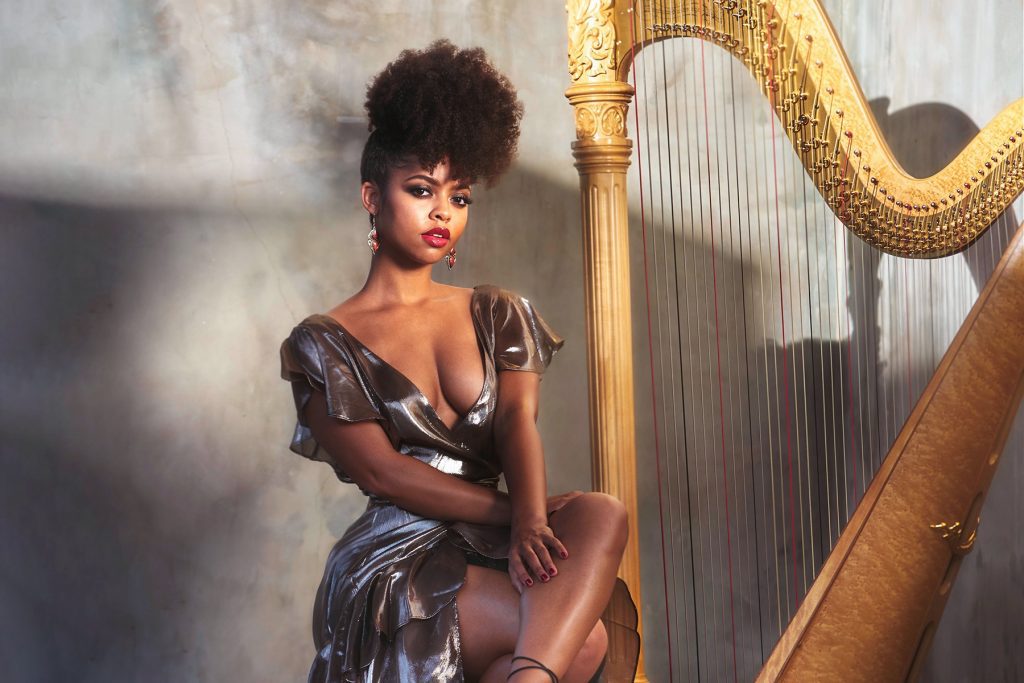
How Madison Calley — and Her Harp — Made History
Days before the 2021 Grammys, Madison Calley received some devastating news: The harpist was supposed to perform with rapper Roddy Ricch, but when Ricch decided to head in a different direction, Calley’s appearance was scratched. “I had already told my mom about the performance, and she was so proud of me,” Calley remembers. “I was just so bummed.”
She decided to send a previously unreleased video over to Ricch’s team, showing her covering his song “Rockstar,” along with a request to be kept in mind for future projects. The next day, she received a text from the team: They wanted her to come into the studio to lay down the harp instrumental … and perform with Ricch at the Grammys. “I couldn’t believe it!” she says.
As Ricch’s Grammys performance began, there was a wide shot of the stage. A giant colorful floral arrangement of wisteria garlands hung in the center, and underneath sat Ricch in front of a purple piano. To his right was Calley, decked out in all black, poised with her $40,000 Lyon & Healy Style 23 signature harp, which she named Anastasia, after the Disney film. She zoned out everything until it was just her and Anastasia. “I get very in the zone and very present to what I’m doing,” she says. “I actually get very calm.”
blogherads.adq.push(function () {
blogherads
.defineSlot( ‘medrec’, ‘gpt-dsk-tab-article-inbody1-uid0’ )
.setTargeting( ‘pos’, [“mid-article”,”mid”,”in-article1″,”mid-article1″] )
.setSubAdUnitPath(“music//article//inbody1”)
.addSize([[300,250],[620,350],[2,2],[3,3],[2,4],[4,2]])
;
});
As Ricch began the first lines of “Heartless,” the camera panned to a shot of Calley, then focused on Anastasia’s ornate detailing. It wasn’t until Calley was watching the Grammys on air date that it fully hit her: She was a part of history.
Clicking on almost any video on Calley’s Instagram feed will show her seated in front of Anastasia, as lush, green plants fill the room. Fashionable and toned, with a regal crown of curly hair, Calley plucks the notes out effortlessly. Hers is a concert harp, which delivers a warm, well-rounded sound. Soon you’re lost in the music, carried away by waves of nostalgia brought on by Calley’s covers of Brandy, Sade, Bill Withers, and others. Then, just as soon as it began, the experience is over … until you click the next video on her Instagram feed and immerse yourself all over again.
With hundreds of thousands of followers and a performance at the 2021 Grammys under her belt, Calley is breaking barriers as a black woman redefining society’s ideas of what a harpist looks like, at a time when, according to one estimate, less than five percent of orchestral musicians in the United States are BIPOC.
“As kids, my brothers and I had to choose both a sport and an instrument,” Calley remembers. “When I was four years old I went to a restaurant with my family, and a harpist was there playing Disney songs. I loved Disney, and liked how it sounded, so I chose the harp. That was how it all started. Just that simply.” For the Washington, D.C., native, music was a family affair. Her grandfather was a professor of music at Tuskegee University, and was Lionel Richie’s first music teacher (years later, Richie and his assistant helped Calley get settled when she moved to L.A.). Her parents, both civil rights attorneys, filled their Virginia home with music; Calley’s mother plays the piano.
When Calley decided upon the harp, her mother arranged for her to be classically trained. She got her first student-level harp at age eight, and eventually was accepted into the D.C. Youth Orchestra, where she played for two years. As she became more involved in sports (including 16 years of gymnastics), she started hating music and wanted to quit. Her mother was having none of it. “She’s having the biggest ‘I told you so’ moment right now!” Calley exclaims.
blogherads.adq.push(function () {
blogherads
.defineSlot( ‘medrec’, ‘gpt-dsk-tab-article-inbody2-uid1’ )
.setTargeting( ‘pos’, [“mid-article2″,”mid”,”in-article2″,”mid-article”] )
.setSubAdUnitPath(“music//article//inbody2”)
.addSize([[300,250],[300,251],[620,350],[2,4],[4,2],[3,3]])
;
});
After graduating from Carnegie Mellon University, Calley moved to Los Angeles to launch a swimwear line, Calley Sunshine. “I have always been a lover of fashion, and I knew I’d go into the field at some point,” she says. She was getting reposted on style pages, and decided to start incorporating her harp into her social posts. In her first harp video, she played a Beethoven sonata; the next day, she had 30,000 new followers. When the pandemic hit, and her swimwear manufacturer closed down, she decided to record R&B covers of songs like Alicia Keys’ “If I Can’t Have You,” K-Ci and JoJo’s “All My Life,” and H.E.R.’s “Focus.” Her work has received extraordinary reception and acclaim on social media as people search for solace and beauty in the midst of the pandemic. Calley cites Keys and Sade as her biggest musical inspirations, and Keys has reciprocated the love, reposting two videos of Calley covering her songs.
As a black woman, Calley had to learn to navigate the orchestral field early on. “When I started taking lessons, my mom couldn’t find any black harp teachers for me,” Calley remembers. She began her lessons with the daughter of a Grammy-winning harpist. As a girl, Calley would go to her teacher’s home and complete her lessons in the company of Civil War paintings depicting enslaved black people, supposedly smiling as they engaged in their backbreaking work in cotton fields. These visions looked down from their frames at the young black harpist, fellow outsiders in a white-dominated world: “That’s part of why I didn’t really enjoy it back then, because I stood out so much. My peers weren’t trying to befriend me or be kind to me. They’d be sitting together, and I’d be sitting with my mom. I felt like such an outsider. [Kids were] looking at me like, ‘What’s she doing here?’”
Ultimately, the hostility of her peers set the stage for her to be in a league of her own. “I never came across any other black harpists until after college, and I’ve never met one in person. I’ve met a few online, though.” Calley is dedicated to changing this, and is taking steps to redefine the landscape for black classical musicians. “I decided early on that I wanted to play a role in reshaping how one can learn to play the harp. Learning to play this instrument is super-expensive, and I want to make learning more affordable.”
blogherads.adq.push(function () {
blogherads
.defineSlot( ‘medrec’, ‘gpt-dsk-tab-inbodyX-uid2’ )
.setTargeting( ‘pos’, [“mid”,”mid-articleX”,”in-articleX”,”mid-article”] )
.setSubAdUnitPath(“music//article//inbodyX”)
.addSize([[300,250],[300,251],[3,3],[620,350]])
.setLazyLoadMultiplier(2)
;
});
Calley currently teaches a handful of students virtually. She notes that even the canon books for learning to play the harp are rooted in frameworks of whiteness, full of songs written long ago by white composers for white audiences. As part of her passion to bring other BIPOC students into the fold, Calley plans to become an ambassador for the Berkeley School of Music admissions program, where she’ll play a crucial role helping recruit BIPOC students. Calley recently started playing the ngoni (also known as the “hunter’s harp”), a traditional instrument from Mali, West Africa, and will begin posting ngoni videos soon. “I’ve always been fascinated by the origins of the harp. In the end, it all comes from Africa.”
Her presence is the culmination of a journey that started many years ago, and her influence will be felt by black harpists for generations to come. Calley plans to release a Juneteenth track on Apple Music this summer, and to record an album this year. “More than anything, I’m super-honored to be able to teach,” she says. “My goal is to inspire as many people as I can and play a direct part in expanding the field of black harpists. It’s all about representation and creating space, and I’m honored to be in a position to do that.”
